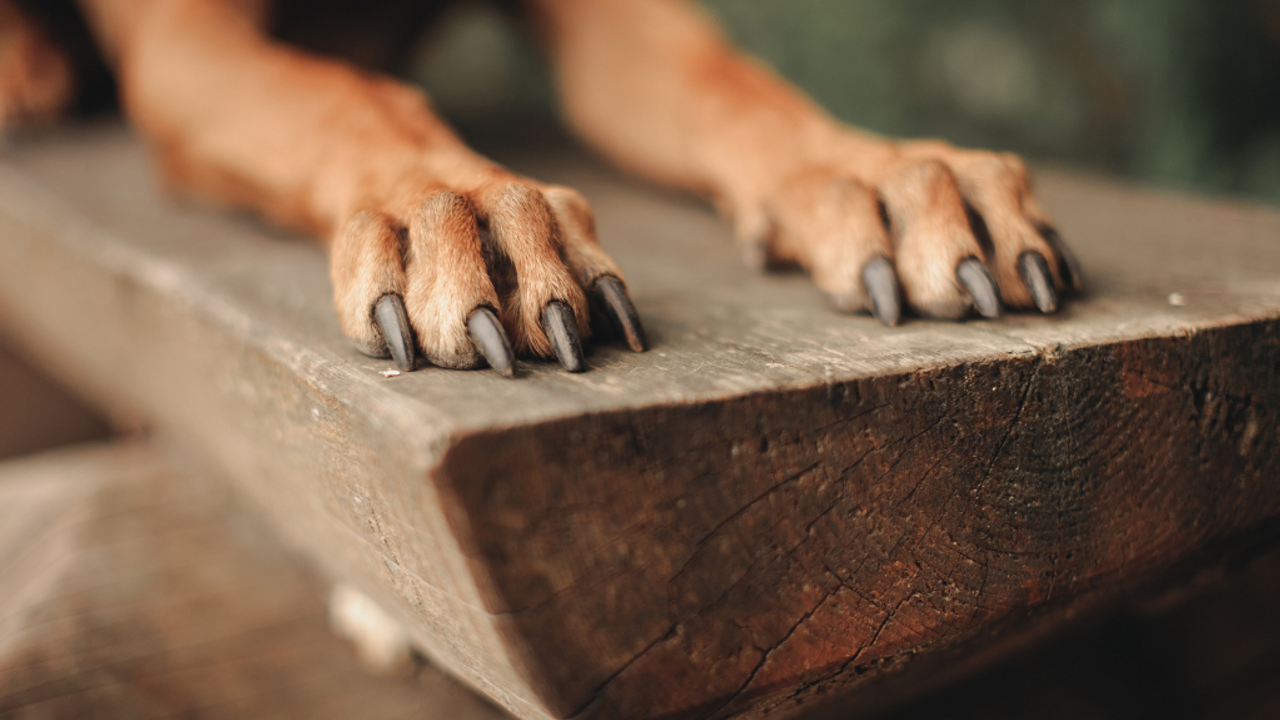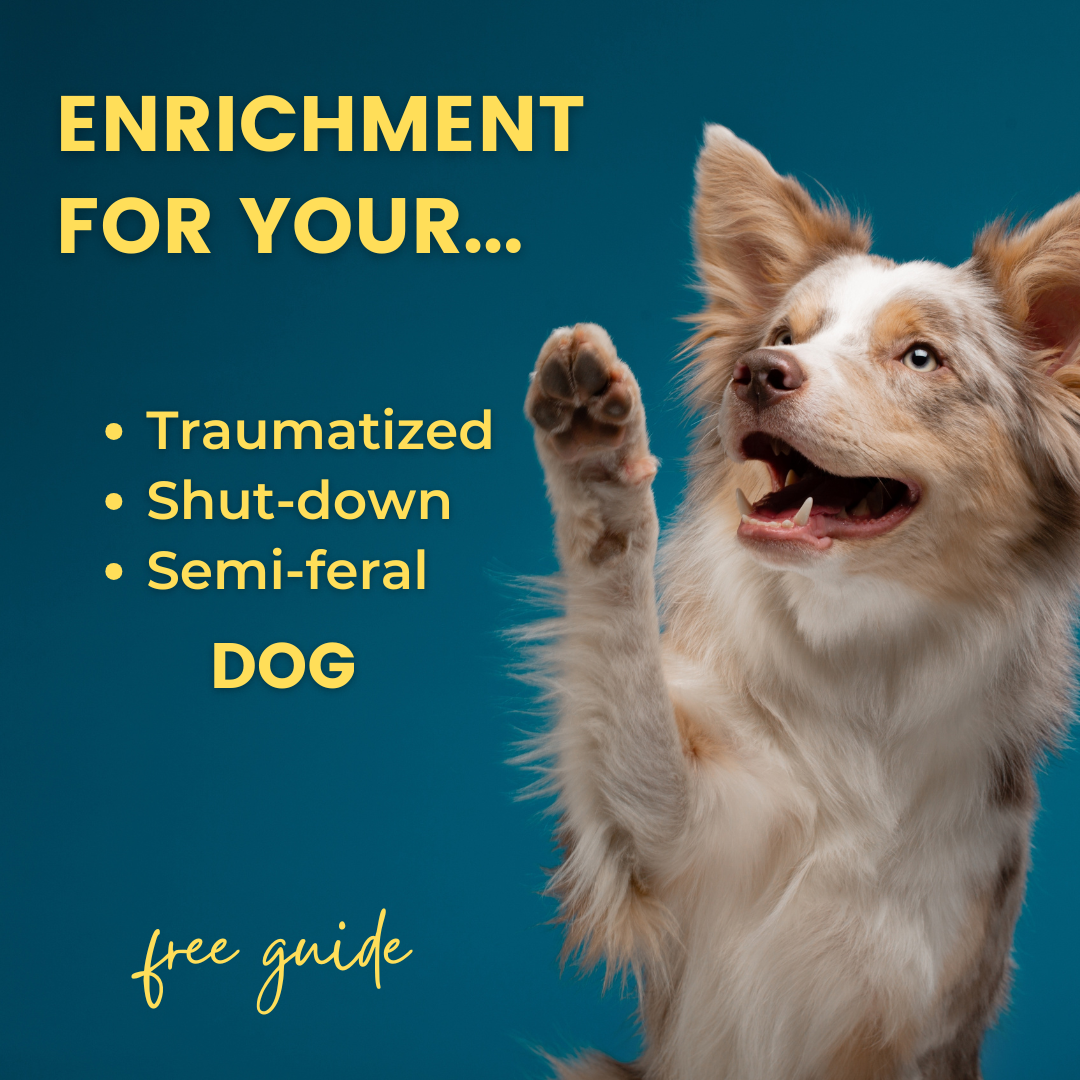Nail Board Training For Fearful Dogs
Nov 15, 2021
Is nail care a regular struggle for your fearful dog? Are you trying to get them to participate in nail care, but unsure where to start? In this week's video, I explain how to get started training your dog to file their own nails with a nail board. Here are some of the highlights:
Where Do I Find A Nail Board?
Nail boards are like a giant nail file or emory board. They can be made cheaply at home, or purchased. If you're going to make your own:
- Choose a base: The base of your nail board can be made from any flat or curved solid surface. Common choices are pieces of scrap wood, cutting boards, or PVC pipe cut in half.
- Add an abrasive surface: Self adhesive abrasive tread tape can be purchased online or at most hardware stores. You can stick this tape right onto your nail board base, and you're done!
What if I would rather buy one? Nail boards can also be purchased premade through retailers such as Etsy.
Set Up For Nail Board Training
If you have a nail board, and your dog will eat treats when you're nearby, it's time to set up for training. Here are some considerations if your dog runs away at the first sign of grooming or other handling:
- Where does your dog spend time? Consider training in an area where your fearful dog already spends a lot of time. Depending on your setup, this might could mean near a dog bed or crate, in a particular room, or in a specially set up safe zone;
- Where does your dog already put their paws? Place the nail board somewhere that your dog already scratches, walks over, or puts their paws up on. This can make shaping the scratching behavior faster.
- Where will you be? Dogs who are fearful of handling might not tolerate you sitting too close to them during training at first. Experiment with where and how you sit to find what works best for your dog.
- Distance: For some dogs, sitting farther away from the nail board may be helpful.
- Seating: Choose whether to sit on the floor or a chair based on your dog's preferences. Many dogs seem to be less concerned about people seated on the floor, while others may prefer the additional distance of a person seated in a chair.
- Your orientation: Try sitting with the side of your body facing your dog, rather than facing them head-on. For many dogs, human body language like directly facing a dog can be scary.
- How will you deliver treats? If your dog is comfortable taking treats from you, you might be able to hand feed or drop treats during training. If more distance is required, you might need to toss or roll treats. Another option for delivering treats at a distance is an automatic feeder (like a Pet Tutor or Manners Minder) if your dog doesn't respond negatively to the mechanical noises they make.
Training Your Dog To Scratch The Nail Board
Once you have your training set up, it's time to teach your dog to scratch the nail board. Scratching behavior can be broken into several smaller pieces:
- Approaching the board: Place the board on the floor or wherever you've decided to train. You can wait for your dog to approach the board, and reward that, or encourage them to approach by scattering treats on or near the nail board.
- Place paws on the board: If you can place the nail board somewhere where your dog is likely to put their paws anyway, then you can just wait and reward your pup when they step on the board. A more proactive option is to toss treats on/near the board. When your dog steps onto the board to get the treats, reward them by tossing another treat to them.
- Scratch the board: There are at least a couple of options for getting your dog to start scratching the board.
- Prompt your pup to dig on top of the nail board, by hiding treats or a toy under a towel. You can see an example in the video. There are some commercial products that even have a treat compartment underneath the nail board surface, for this purpose.
- Deliver your treats in a way that encourages your dog to drag their nails down the board. For our dog Pancake, we set up his nail board in front of his crate, and tossed treats behind him into his crate so he dragged his paw back when getting to them.
- Fade out the prompts: This means removing the "extra help" you gave your dog at first to get them to scratch the board. For example, if you hid treats under a towel to get your dog to start scratching, you can try gradually decreasing the size of the fabric covering the treats. If you used food lures to get your dog to scratch the board, you could start by moving to a smaller or less obvious food lure, or even by just skipping the lure entirely and waiting to see if your dog will try the scratching behavior anyway.
I hope this week's video gives you some ideas for getting started with the nail board. Next week, we'll look at next steps in nail board training, like getting your dog to scratch the board more vigorously.
If you're looking for more one-on-one guidance with your fearful dog, check out our online training membership, the Reactive Dog Academy. For a more personalized plan, sign up for private training.
If you are getting started with nail board training, we want to hear about your successes or struggles. Join our Facebook group and post your questions or comments there, or email us at [email protected].



